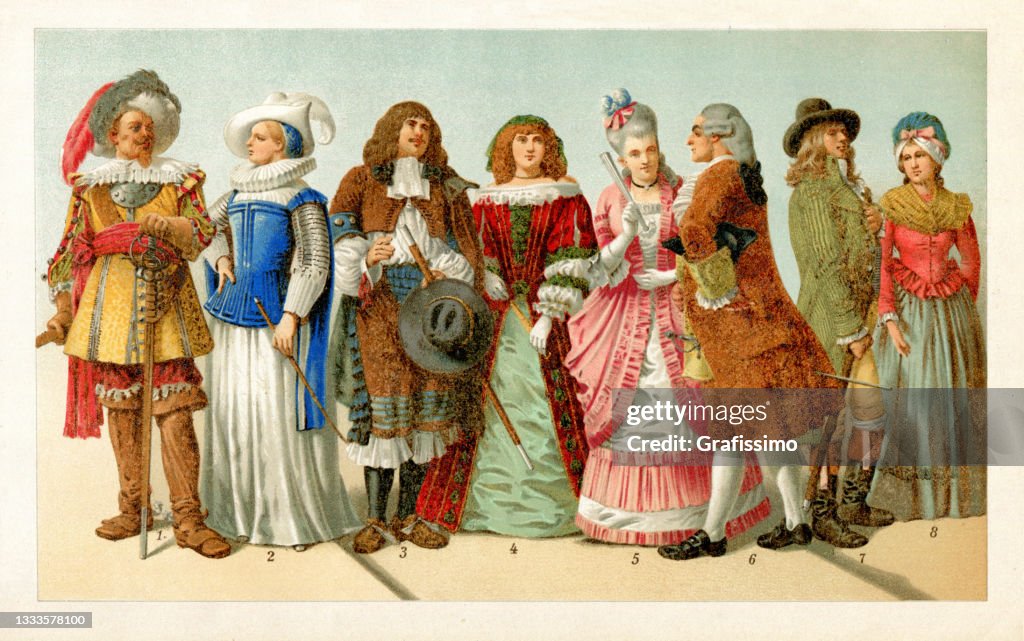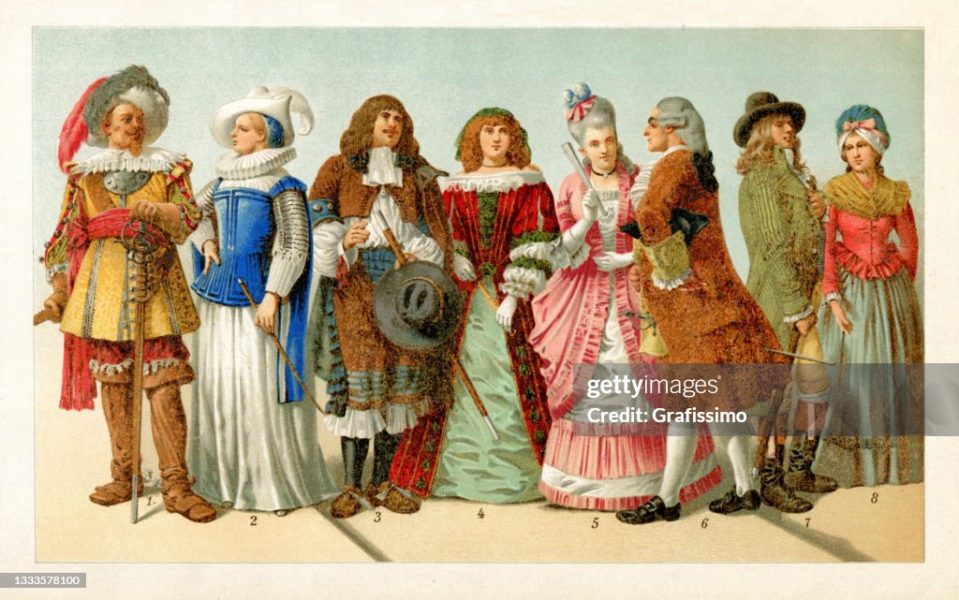

Source : Brockhaus 1898
Sursa: https://www.gettyimages.com/photos/17th-century?page=5
Autor: prof. Bogdan Maria-Georgiana
Nobility titles have a long history and their usage has also changed throughout time, and they have played important roles in the unfolding of different periods in history of one country or another. However, this aspect has changed a lot in the modern period and the members belonging to different noble families do not have special rights and responsibilities, as did their ancestors. Each title was granted by the king himself and it was inherited by the eldest of the sons; women were not taken into account for this part, even if, in some situations, they were older than their brothers. Noble titles were accompanied by the possession of land, which was offered as a reward, in general, for military service, and they also offered a place in the House of Lords once the holder was of age. Towards the end of the sixteenth century, the nobles mostly gave up on their military careers and chose to focus on the political domain and the power it came with it. They became highly influential people, both in their local and national government; they were the ones making decisions around their estates, exercising control over the people who worked on their lands.
Members of noble families were not allowed to do manual labour or to subordinate to people who were lower in rank – with the exception of military service. They were expected to attend very good educational institutions and to have jobs in the important domains of the time: politics, military service, law or church service. A noble family would live in a big house, which was especially designed to show the family’s level of wealth, enjoying some of the facilities which other houses did not have, such as having pipes of water inside their houses. They would enjoy the comfort and the beauty of new pieces of furniture made of more sophisticated materials, with more expensive decorations; chests of drawers were decorated with white pearls, while wooden chairs were carved with different noble symbols.
Despite many differences between rich and poor, there was a similarity regarding the aspect of marriage. Marriages were seen more like a business deal than a love relationship; arranging a marriage either for land or for money was something considered to be normal in that period. Unfortunately, people got used to this way of seeing things and it did not seem to be a problem for them to raise their children believing in the same values. Also, the relationship between parents and children was very cold: in the sixteenth century, most noble families would have nurses to take care of their new-born babies until they were three or four years old. The child would not bother their parents and would not disturb their social events, and he/she would also be invited to spend some time with their mother or father at their convenience. The children lived in separate rooms, having separate servants to look after them, while their parents were away with other business. At the age of ten, the boys were sent to grammar schools or elite public schools, where they were exposed to the „language of the European elite” and to models which would make them future aristocratic members, according to Robert Bucholz (166). Girls were sent to an even aristocratic household ( when it was the case) and they were taught how to take care of the house either by a private tutor or by their own mothers.
One would ask why? Why would the noble families choose to do so? Two main reasons could be used here: on the one hand, the mother, freed from the responsibility of feeding her baby, would be free to take care of her responsibilities as a housewife and hostess and making sure that the household is run properly; on the other hand, women were more available to conceive to other children, other heirs for the noble family. Nevertheless, things started to change at the beginning of the seventeenth century, when there was a strong opposition to this way of raising a child, if not for social reasons at least for nutritional ones: a baby fed by his/her mother, in a natural way, was by far stronger and had more chances of surviving infancy problems of the time. Once mothers started breastfeeding their babies, the connection was formed and a change in the attitude of the family toward the babies and the children could be seen; if, in the past, a dead baby was not mentioned in the diaries of the respective family, later on this tragic event would be written down with evidence of sorrow.
Families became more interested in the well-being of their offspring and started caring more about their future. Thus, noble young boys would attend the prestigious universities of Oxford and Cambridge, followed by the Inns of Court ( the professional associations for barristers) and even the common laws in London. The graduation of one of these forms of study was immediately followed by a Tour of Europe, in which the young man would go together with his tutor and only after returning from it would he be considered fit for the society, for having a position and for getting married.
So, the idea was that people should marry within the same group; a rich family would have never allowed for marriages under their social level as that would jeopardize their title, their legacy and their estate. A family would definitely care for the dowry of the bride, which was mainly represented by land and which represented one of the greatest business deals of the time. But this did not mean that the young man or the young lady could be forced upon marriage; in most situations, they had the right to decide if their parents’ match was appropriate for them. Because the norm of the time was to have a social position and a certain financial situation, a lot of the noble marriages were thought to be made without including love or affection. Husbands and wives used very polite forms of addressing one another: „Sir”, ” Madam”, ” Mister” or ” Mistress”, not only in public but also in their private lives.
TO BE CONTINUED


